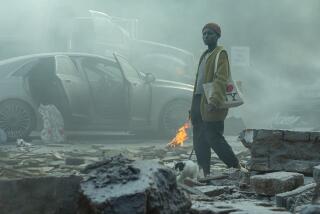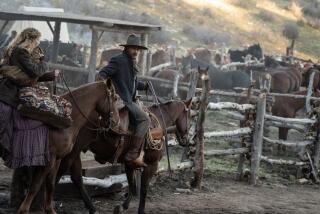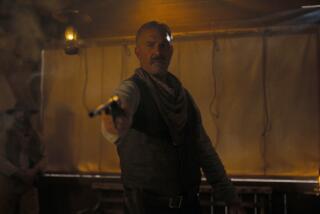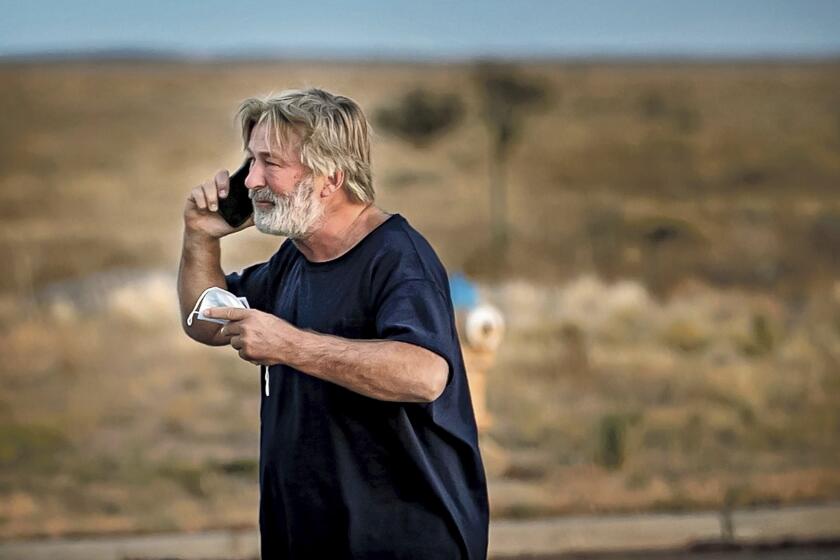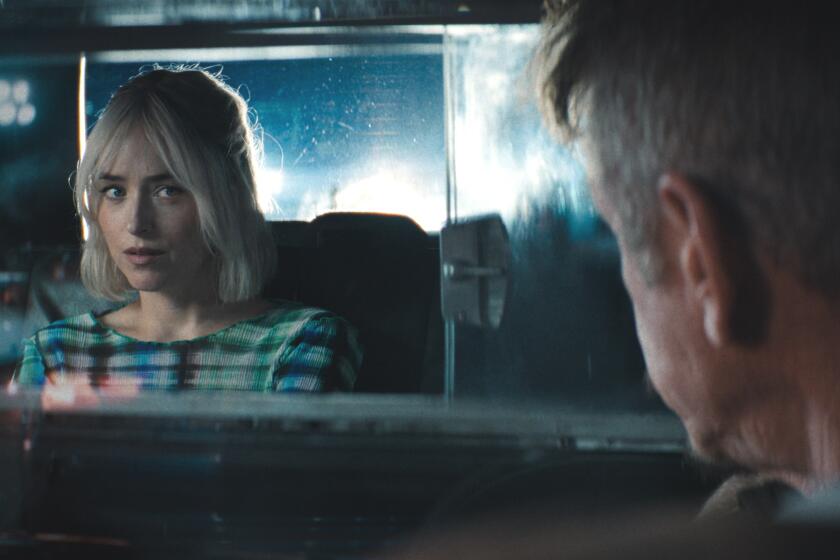A nod to the blockbuster boys of summer
Dustin HOFFMAN loves to tell the story of how producer Robert Evans convinced him to make “Marathon Man,” the 1976 thriller that features Hoffman matching wits with Laurence Olivier. Evans repeatedly badgered Hoffman to read the script, which Evans pronounced the greatest piece of writing ever put to paper. After the actor finally read the script, he diplomatically informed Evans that he wasn’t all that impressed. It seemed to need an awful lot of work.
“Oh, I know that,” Evans instantly replied, as if they’d already discussed its many failings. “But imagine how great it’ll be after we fix it.”
Nobody has ever made his mark as a Hollywood producer by patiently waiting in line to get his parking ticket stamped. The best producers have an irresistible, often infuriating combination of showmanship, moxie, fanatical attention to detail, an insatiable desire to win and a knack for, shall we say, sometimes enhancing the truth. In recent years, producers have rarely gotten the respect they deserve, overlooked by critics who view directors as film’s true auteurs and belittled by their industry peers, who joke about the parade of films that arrive adorned with the names of 15 different producers.
But when it comes to putting together the studio’s bread ‘n’ butter, the action-adventure Franchise Film, it’s the producers who deserve the credit -- they’re the Big Kahunas of the summer movie season. When Sony had a test screening of “Bad Boys 2” recently, a stream of kids surrounded uber-producer Jerry Bruckheimer, all wanting his autograph.
Most of this summer’s highly touted films have a powerhouse producer at the helm, including Bruckheimer (“Bad Boys 2” and “Pirates of the Caribbean”), Neal Moritz (“2 Fast 2 Furious” and “S.W.A.T”) Larry Gordon (“Lara Croft Tomb Raider: The Cradle of Life”), Joel Silver (“The Matrix Reloaded”), Frank Marshall and Kathy Kennedy (“Seabiscuit”), Lauren Shuler-Donner (“X2: X-Men United”) and Hal Lieberman (“Terminator 3: Rise of the Machines”).
The pressure of keeping a $100-million-plus movie on track is excruciating; the bigger the film, the better the chance that it will spiral out of control, as “Titanic” did, tellingly without a strong producer on deck. As Gordon, who launched the “48 HRS.” and “Die Hard” franchises, puts it: “To get one of these movies made, you have to ram your head repeatedly through a plate-glass window without getting a fatal cut, just a lot of stitches.”
Studios develop material, but it’s the hard-nosed producers who often will a project into existence, finding the right writers, wooing the best talent, keeping the director on budget and prodding studio marketers to make better trailers and TV spots. “I’ve told Joel Silver no,” Warners marketing chief Dawn Taubin says with a laugh. “I’m just trying to remember when.” Producers thrive on solving insoluble problems. When Universal’s big 2002 summer thriller, “The Bourne Identity,” was about to crash and burn, Frank Marshall stepped in, flying off to Prague to take control of the picture, which went from being a near disaster to the studio’s top-grossing movie of the year.
This summer Marshall and Kennedy, who’ve produced more than 40 movies during their two decades as a team, have been at the reins of Universal’s “Seabiscuit,” an expensive period film filled with logistical challenges. “What they’ve done on ‘Seabiscuit’ is positively Herculean,” says Universal studio chief Stacey Snider. “When Frank and Kathy are on a movie, you can put your head on a fluffy pillow and sleep well at night. If they say they’re doing something, they do it.”
When someone writes a history of the Hollywood action movie, they will find much of the text devoted to the energies of producers like Gordon, Silver and Bruckheimer -- for better and for worse. It was Gordon, back in 1982, who popularized the black-and-white buddy team, casting Eddie Murphy with Nick Nolte in “48 HRS.” It’s a formula that has become a convention of the action genre, largely through the efforts of Silver, once Gordon’s protege, whose films have teamed everyone from Bruce Willis and Damon Wayans to Steven Seagal and DMX. (Silver didn’t respond to several interview requests).
Bruckheimer has made casting an art, pioneering the use of prestige actors and highbrow writers in his Big Bang movies. The producer turned Nicolas Cage into an action star, teaming him with Sean Connery in “The Rock,” while casting the likes of John Cusack, John Malkovich and Steve Buscemi in other of his hits. “Jerry completely changed the action genre by putting great actors and great writers on his films,” says Columbia Pictures chief Amy Pascal. “There wouldn’t be a ‘Bad Boys’ sequel if it wasn’t for Jerry. At first I was a little taken aback because Jerry literally does everything on the movie. But you’re glad to have him running the show.”
Bruckheimer is renowned for hiring different specialists to write action, comedy and character material. For all of its action set pieces, “Bad Boys 2” was sculpted by three writers -- Ron Shelton, Jerry Stahl and John Lee Hancock -- known for their sharp dialogue and attention to nuance. Michael Bay, the film’s director, initially balked at Bruckheimer’s choice of Hancock, skeptical that the writer of films like “A Perfect World” was right for an action movie.
“I reminded Michael that John was a director [“The Rookie”] himself,” recalls Bruckheimer. “So he knows a director’s problems and how to solve them. By the end, Michael loved him so much that he kept bringing him back for more work.”
Bruckheimer’s other summer film, “Pirates of the Caribbean,” stars the unlikely pair of Johnny Depp and Orlando Bloom. Depp has shunned action movies, but Bruckheimer flew to Paris and convinced him the part would be a challenge, not a chore. “Depp wouldn’t be anyone’s first choice for this movie, but Jerry insisted and he was right,” says Disney marketing chief Oren Aviv. “He always gets actors on the way up -- who knew Ben Affleck before ‘Armageddon’ or Josh Hartnett before ‘Pearl Harbor’? Orlando Bloom is now the hottest guy in terms of online buzz, but Jerry knew about him before anyone else.”
A producer’s job is even more difficult when casting goes wrong. After a week of shooting on “Terminator 3,” Lieberman and director Jonathan Mostow had to bring in Claire Danes to replace actress Sophia Bush. “There’s no easy way to do it,” Lieberman says. “It’s not only hard on people personally, but we had to look for someone who was available before we let her go, and then we had to re-shoot a week of footage.”
Re-shoots cost money and money is at the core of nearly every producer headache. Before he got a green light for “2 Fast 2 Furious,” Moritz had to cut a big race scene that would’ve pushed the movie over its $80 million budget. But the replacement scene wasn’t exciting enough. “I told the studio, ‘We’re all going to regret it later on if we don’t shoot it,’ ” Moritz recalls. “When you’re the producer, you have to fight for every scene -- your loyalty is to the movie.”
On “Terminator 3,” the production budget was barely $100 million, with another $70 million going to acquiring sequel rights and paying star and filmmaker salaries. Lieberman had 102 days to shoot last summer -- a relatively short time for one of today’s mega-action movies. “Even when we were writing the script, we had to compare it to the money we had -- it was a fixed pot,” he explains. Faced with a budget crunch, Lieberman shifted a key futuristic chase scene from night to day, giving the production a 10-hour shooting day instead of the six or eight hours it would’ve had if they’d filmed during the short summer nights.
“As a producer you always have your bad days,” he explains. “It’s like being in a slump on a baseball team. Somehow you have to come out of it, except in filmmaking, you have to come out of it without spending any extra money.”
Producing ends up being about problem-solving. Kennedy and Marshall knew “Seabiscuit” writer-director Gary Ross had to shoot an enormous amount of racetrack footage, but with significant limitations. In the 1930s, racetracks often had crowds of 100,000 people. The film didn’t have the resources to hire that many period-costumed extras and or do the scenes entirely with visual effects. Thanks to an inventive production assistant, the producers came up with a solution: 7000 blow-up dolls known as “extra extras.”
“Each one had a T-shirt that looked like a suit and we’d put cheap period hats on their head,” explains Marshall. “They were a lot more realistic than the flat cardboard cutouts you normally use, because you could move them or tilt them, giving us more camera angles to choose from.”
“It wouldn’t be as much fun if you could just order up 100,000 people,” says Marshall with a laugh. “That would be too easy!”
*
“The Big Picture” runs every Tuesday in Calendar. If you have questions, ideas or criticism, e-mail them to patrick .goldstein@latimes.com.
More to Read
Only good movies
Get the Indie Focus newsletter, Mark Olsen's weekly guide to the world of cinema.
You may occasionally receive promotional content from the Los Angeles Times.
